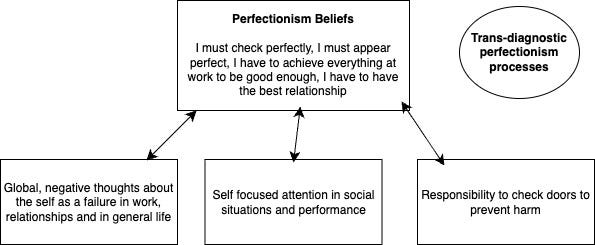Breaking Free from Clinical Perfectionism: The Latest Research and CBT Strategies
Recent research reveals that clinical perfectionism is more about fear of failure and self-criticism than just high standards- where is the research now, and what strategies are most effective?
Have you ever worked with a client who achieves great things but is never satisfied? Or someone who hesitates to start a task for fear of not doing it perfectly? If so, you’ve likely encountered clinical perfectionism- a common but challenging issue.
While striving for excellence can be positive, clinical perfectionism often leads to anxiety, depression, procrastination, burnout and disruption to other areas of life such as leisure and relationships. Clients set impossibly high standards, fear failure, and engage in relentless self-criticism.
Fortunately, our understanding of perfectionism has grown over the years. Research now sheds more light on what drives it and, more importantly, how to help clients break free from its grip.
Where does the research stand today, and how can CBT therapists apply these findings in practice?
Perfectionism isn’t just about wanting to do well, it's about tying self-worth to achievement. Researchers distinguish perfectionism between:
Adaptive perfectionism: High standards that drive personal growth and success.
Maladaptive (clinical) perfectionism: Rigid, self-critical standards that cause distress and dysfunction.
While perfectionism was initially linked to anxiety and depression, we now know it plays a role in many mental health challenges, including OCD, eating disorders, and even burnout12.

The CBT model of clinical perfectionism, first proposed by Shafran et al.3, laid the foundation for CBT-based interventions targeting perfectionism.
Over the past two decades, research has expanded on this framework, refining treatment approaches and validating their effectiveness. A recent review reflecting on 21 years of CBT for perfectionism highlighted significant progress in identifying core mechanisms such as unrelenting self-criticism and fear of failure and refining interventions to break these cycles4.
Cognitive-behavioural models suggest perfectionism is maintained by distorted beliefs (e.g., “If I don’t do this perfectly, I’m a failure”), avoidance behaviours, and reinforcement cycles. With continued research, CBT strategies have evolved to not only challenge these beliefs but also promote self-compassion and psychological flexibility, leading to more sustainable therapeutic outcomes.
Key Considerations
CBT remains one of the most well-researched and effective approaches for addressing perfectionism. Some key strategies include:
Cognitive restructuring: Helping clients challenge rigid, self-critical beliefs5.
Behavioural experiments: Encouraging exposure to imperfection to test fears about failure6.
Reducing avoidance behaviours: Breaking the cycle of procrastination and excessive reassurance-seeking7.
That said, treating perfectionism isn’t always straightforward. Why?
Because:
Clients may resist change: Many believe perfectionism is the key to their success.
Fear of failure runs deep: Overcoming it requires consistent cognitive and behavioural work.
Social reinforcement: Many environments reward unrealistic standards, making change even harder.
Perfect clients: Clients may apply perfectionism to therapy, which can be challenging given therapy can have disappointments and setbacks.
Given these challenges, integrating third-wave CBT approaches such as mindfulness, Compassion Focused Therapy and Acceptance and Commitment Therapy (ACT) can complement traditional techniques and help clients develop a healthier mindset.
In addition, having open conversations about how perfectionism may impact the therapeutic process, can be helpful, and prevent drop-out.
Clinical Applications
So, what can therapists do?
One approach is helping clients spot their perfectionistic thoughts in real time8.
Another is working on self-compassion- teaching them to treat themselves with kindness instead of criticism in the aftermath of failure, whilst allowing striving for excellence9.
Finally, encouraging a shift in mindset from ‘perfect results’ to ‘learning through the process’ can make a huge difference10.
However, one of the key takeaways is that we are not trying to eliminate perfectionism entirely, but rather help clients separate healthy ambition from harsh self-judgment.
Moving Forward
Research on perfectionism is evolving, with emerging studies focusing on:
The effectiveness of online and self-help interventions11.
The role of perfectionism in workplace burnout12.
How perfectionism manifests across cultures and different age groups13.
For now, CBT therapists can refine their practice by integrating research-backed interventions, fostering realistic goal setting and self-compassion, and encouraging clients to embrace flexibility and limit self-criticism, rather than perfection.
Share your thoughts below: How do you help clients who fear that letting go of perfectionism will lead to failure? What CBT techniques have been most effective in challenging this belief? Share your experiences or strategies that have worked in your practice.
Author: Written by Kavya Suresh Kumar for Between Sessions



